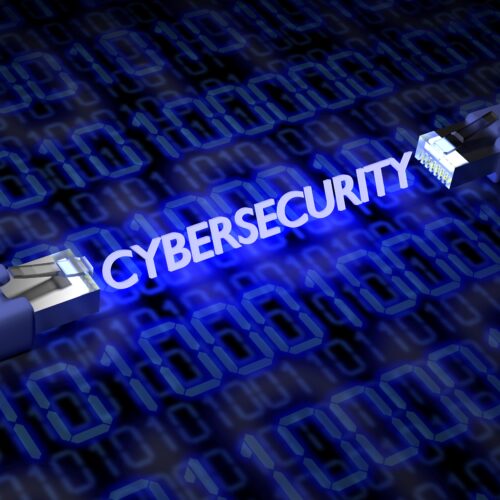The importance of cybersecurity awareness cannot be overstated. In today’s digital age, our personal and professional lives are increasingly reliant on technology and the internet. As a result, we are exposed to a wide range of cyber threats that can compromise our sensitive information and disrupt our daily activities.
Cybersecurity awareness is crucial for individuals, businesses, and organizations of all sizes. For individuals, being aware of cybersecurity threats and knowing how to protect yourself can help to prevent identity theft, financial loss, and other negative consequences. For businesses and organizations, cybersecurity awareness is important because a breach can lead to financial losses, damage to reputation, and legal consequences.
In addition to the direct consequences of a cyber attack, the indirect costs can also be significant. For example, if a business experiences a data breach, it may need to spend time and resources recovering from the attack, which can result in lost productivity and revenue. Similarly, individuals who fall victim to a cyber attack may need to spend time and money trying to recover their personal information or financial losses.
Overall, cybersecurity awareness is essential for protecting ourselves and our organizations from the potentially devastating consequences of a cyber attack. By being aware of the various threats that exist and taking steps to protect ourselves, we can significantly reduce our risk of falling victim to a cyber attack.
Common cybersecurity threats can come in many forms and can potentially compromise our personal and professional lives. Some common threats include:
Malware: Malware is short for “malicious software” and refers to any software that is designed to harm or exploit a computer system. There are various types of malware, including viruses, worms, Trojans, and ransomware. Malware can be delivered through email attachments, web links, or downloads, and it can cause serious damage to your system, including stealing sensitive information, deleting files, or rendering your system unusable.
Phishing attacks: Phishing attacks are a common cyber threat in which attackers attempt to trick you into revealing sensitive information, such as login credentials or financial information, by posing as a legitimate entity. These attacks can come in the form of email, text message, or phone call, and they often use urgent or threatening language to try to get you to act quickly.
Unsecured Wi-Fi networks: Public Wi-Fi networks, such as those found in coffee shops or airports, can be a risk because they are often unsecured and can be easily accessed by anyone. If you connect to an unsecured Wi-Fi network, your personal information and data can potentially be accessed by others on the network.
Weak or easily guessable passwords: Using weak or easily guessable passwords is one of the most common mistakes people make when it comes to cybersecurity. Hackers can use password cracking tools to easily guess simple passwords, so it’s important to use strong, unique passwords for all of your accounts.
Unsecured devices: Any device that is connected to the internet, including laptops, smartphones, and tablets, can potentially be a target for hackers. To protect your devices, it’s important to keep them up to date with the latest software and security patches, use a firewall to block unauthorized access, and use antivirus software to protect against malware.
As a business or organization, it’s important to take steps to protect yourself against cyber threats. Here are some ways to protect your business or organization:
Employee training and education: One of the most effective ways to protect your business or organization is to ensure that your employees are educated about cybersecurity threats and know how to identify and prevent them. Providing regular training and reminders about best practices for cybersecurity can help to prevent accidental or intentional breaches.
Implementing security measures: Another important step is to implement security measures to protect your systems and data. This can include installing firewalls to block unauthorized access, using antivirus software to protect against malware, and implementing secure login processes such as two-factor authentication.
Implementing secure login processes: Using secure login processes, such as two-factor authentication, can help to prevent unauthorized access to your systems and data. Two-factor authentication requires a second step, such as entering a code sent to a phone, in addition to a password in order to log in. This adds an extra layer of security and makes it much harder for hackers to gain access to your systems.
Regularly updating software and security measures: It’s important to regularly update your software and security measures to ensure that you have the latest protection against threats. This includes updating your operating system and applications, as well as keeping your antivirus software and other security measures up to date. By staying current with updates, you can help to ensure that your systems and data are protected against the latest threats.
In summary, it’s important to be aware of the various cyber threats that exist and take steps to protect ourselves and our organizations. Some common threats include malware, phishing attacks, unsecured Wi-Fi networks, weak or easily guessable passwords, and unsecured devices. To protect against these threats, it’s important to keep software and security measures up to date, be cautious of unsolicited communication, use strong and unique passwords, and take steps to secure devices.
For businesses and organizations, employee training and education, implementing security measures such as firewalls and antivirus software, implementing secure login processes, and regularly updating software and security measures are all important steps to take to protect against cyber threats.
It’s also important to remember that cybersecurity is an ongoing process. Threats are constantly evolving, so it’s important to stay vigilant and continue to educate ourselves about the latest threats and best practices for protection. By staying aware and taking steps to protect ourselves and our organizations, we can significantly reduce our risk of falling victim to a cyber attack.








